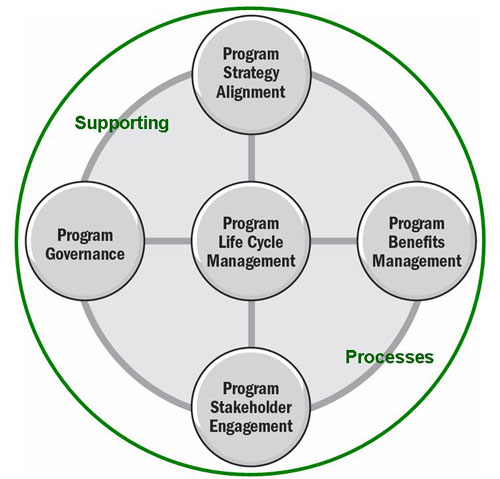The recently released Sixth edition of the APM-BoK consists of four major sections: context, people, delivery and interfaces. Typical ‘hard’ project management processes such as scope, schedule, cost, resource, risk, integration and quality comes in the section focused on delivery. This is after the section concerned with people and interpersonal skills and the first area featured in the APM-BOK under the people area is communication. The APM-BoK recognises that communication is fundamental to the project management environment, and makes a very powerful statement: “None of the tools and techniques described in this body of knowledge will work without effective communication”.
To an extent the PMBOK is playing ‘catch-up’ with other key standards including the Association of Project Management (UK) Body of Knowledge (APM-BoK) 6th Edition and ISO 21500. The good news is all three standards now see identifying the important stakeholders in and around a project or program and then communicating effectively with each stakeholder as the fundamental driver of success.
The recently released Sixth edition of the APM-BoK consists of four major sections: context, people, delivery and interfaces. Typical ‘hard’ project management processes such as scope, schedule, cost, resource, risk, integration and quality comes in the section focused on delivery. This is after the section concerned with people and interpersonal skills and the first area featured in the APM-BOK under the people area is communication. The APM-BoK recognises that communication is fundamental to the project management environment, and makes a very powerful statement: “None of the tools and techniques described in this body of knowledge will work without effective communication”.
The PMBOK® Guide 5th Edition has followed PMI’s standard practice of retaining existing chapters and adding new sections at the back so the positional prominence in the APM-BoK is not possible. However understanding the changes between the 4th and 5th Editions and comparing these to ISO 21500 does show the extent of the increased focus in the PMBOK on communication and the stakeholders you communicate with.
MANAGE STAKEHOLDERS
This is a new section in the PMBOK® Guide 5th Edition (Chapter 13). It is based on two processes moved from the communication section of the 4th edition and has been expanded.
Identify stakeholders is a beefed up version of the same process in the 4th Edition, focused on understanding who the project’s stakeholders are.
Plan Stakeholder Management is a new process that describes how the stakeholder community will be are analysed, the current and desired levels of engagement defined and the interrelationships between stakeholders identified. It highlights the fact that levels of engagement may change over time.
Manage stakeholders remains basically the same as in the 4th Edition and is similarly defined in ISO 21500.
Control Stakeholder Management is a new process that ensures new stakeholders are identified, current stakeholders are reassessed and stakeholders no longer involved in the project are removed from the communication plan. The process requires the on-going monitoring of changes in stakeholder relationships the effectiveness of the engagement strategy, and when required, the adaption of the stakeholder management strategy to deal with the changed circumstances.
As with ISO 21500, the early parts of the PMBOK discussing the management or projects in organisations also has a strong emphasis on stakeholders (Chapters 1, 2 and 3).
COMMUNICATIONS MANAGEMENT
This section of the PMBOK® Guide 5th Edition has been consolidated and expanded and is very similar to ISO 21500 in its effect.
Plan Communications remains basically unchanged, the key input is the stakeholder analysis.
Manage Communications is a new process that amalgamate the 4th Edition processes of Distribute Information and Report Performance, and in doing so removes a lot of unnecessary confusion. This new process goes beyond the distribution of relevant information and seeks to ensure that the information being communicated to project stakeholders has been received and understood, and also provides opportunities for stakeholders to make further information requests. ISO 21500 has an interesting additional function (not in the PMBOK) which is the management of the distribution of information from stakeholders to the project in order to provide inputs to other processes such as risk management.
Control Communications is a new process that identifies and resolves communications issues, and ensures communication needs are satisfied. The outputs are accurate and timely information (resolved communications issues) and change requests, primarily to the communication plan.
Summary
Communication is the means by which information or instructions are exchanged! Communication is the underpinning skill needed to gather the information needed to make project decisions and to disseminate the results from all of the traditional ‘hard skills’ including cost, time, scope, quality and risk management. Good communication makes these processes effective, whereas poor communication leads to misunderstood requirements, unclear goals, the alienation of stakeholders, ineffective plans and many other factors leading to failure.
The common theme across all three standards is that communicating the right information to the right stakeholders in the right way (and remembering communication is a two-way process) is fundamental to success. The basic requirement is to deal effectively and fairly with people, their needs, expectations, wants, preferences and ultimately their values – projects are done by people for people and the only way to influence people is through effective communication.
Project communication skills include expectation management, building trust, gaining user acceptance, stakeholder and relationship management, influencing, negotiation, conflict resolution, delegation, and escalation.
What’s really pleasing to me is how similar these ‘standard’ requirements are to the ideas embedded in my Stakeholder Circle®methodology, books, blogs, White Papers and tools. I have no idea how much influence my writings have had on the various standards development teams but it is pleasing to see a very common set of ‘best practices’ emerging around the world. Now all we need is the management will to implement the processes to improve project and program outcomes.
 The three standards released by PMI at the beginning of this year were the:
The three standards released by PMI at the beginning of this year were the:




